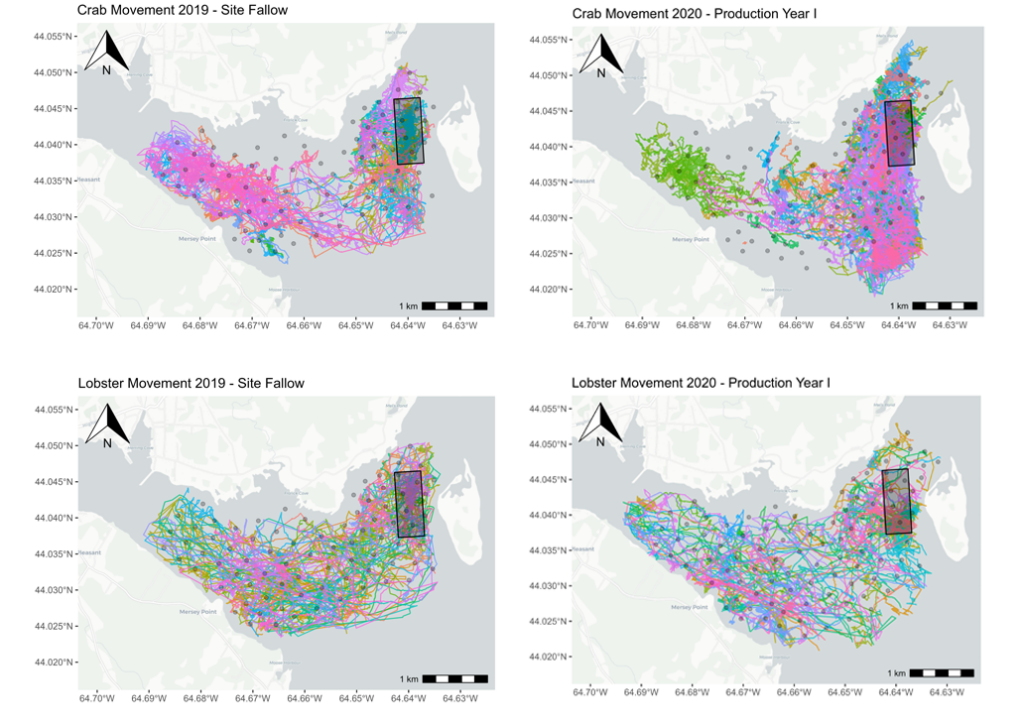In collaboration with with CMAR and the Nova Scotia Department of Fisheries and Aquaculture (NSDFA), Fisheries and Oceans Canada (DFO) initiated an acoustical telemetry research project to better understand potential interactions between salmon aquaculture, lobster, and crab.
Over eighty acoustic receivers were deployed in a bottom grid around a fallowed Atlantic salmon aquaculture site in Liverpool Bay, Nova Scotia between July and November 2019. The acoustic receiver grid was re-deployed from July to November in 2020 during the first year of fish production and again in 2021 during the second year of production. Fifty American lobsters (Homarus americanus) and rock crabs (Cancer irroratus) were collected and fitted with acoustic transmitters, then released back into the bay each year. Acoustic telemetry tracked the lobster and crab movement around the site.
In 2020, CMAR also deployed an Ocean Tracking Network (OTN) glider with an acoustic receiver, to help detect lobsters that may have left the grid area.
Tagged lobsters travelled throughout Liverpool Bay, showed little affinity to the aquaculture site, and most lobsters caught and released adjacent to or below the aquaculture site did not stay in the area over time. Their home ranges also didn’t exhibit much overlap with the aquaculture site. Very similar patterns were observed for lobsters released in the reference areas away from the aquaculture site. In contrast, rock crabs seemed to be associated with the aquaculture site in Liverpool Bay as their home ranges had a high overlap with the aquaculture site for crabs tagged directly under it.
